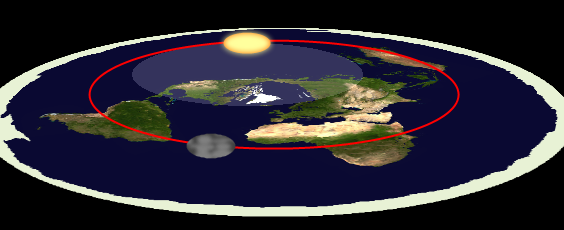So, this here is the model that most FEs just put out there by habit ...

But I think it's wrong. It doesn't really provide an explanation for why the sun moves faster in the South and slower in the North. And, if it's moving faster in the South, then why aren't the lengths of days significantly shorter in the South?
But if you realize that the sun is IN the firmament, all of that makes perfect sense, as the firmament is dome shaped (part of a sphere). Consequently, if the entire firmament makes a full rotation in 24 hours, then things higher up on the sphere would move slower than things lower on the sphere, because the perimeter of a full circle is smaller in the North than it is in the South. THEN, although the sun is moving faster in the Southern hemisphere, it disappears more quickly from view because it's also lower to the flat surface of the earth ... resulting in the fact that the lengths of days are similar in North and South (in opposite seasons of course), despite this difference of speed. Putting the sun back into the dome-shaped firmament where it belongs instead of on a parallel flat plane suddenly makes sense of these unresolved questions in the model above.
